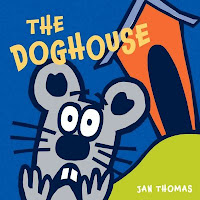 In the summer, though, it's different. For the two months my library district offers its summer reading programs (SRPs), the number of teen volunteers at my library jumps from a dozen to over thirty. And for the duration of the programs, teen volunteers are focused almost entirely on the summer reading station at the branch. My library district simultaneously offers three SRPs for children (all on the same theme, but with slight modifications for age and reading ability), a program for teens, and a program for adults, all of which make for a potentially confusing summer. Thus the necessity of what every volunteer really needs to be effective: training.
In the summer, though, it's different. For the two months my library district offers its summer reading programs (SRPs), the number of teen volunteers at my library jumps from a dozen to over thirty. And for the duration of the programs, teen volunteers are focused almost entirely on the summer reading station at the branch. My library district simultaneously offers three SRPs for children (all on the same theme, but with slight modifications for age and reading ability), a program for teens, and a program for adults, all of which make for a potentially confusing summer. Thus the necessity of what every volunteer really needs to be effective: training.
I hosted our summer reading volunteer training last week, and nearly all of the thirty volunteers attended (non-attendees are trained one-on-one when their schedules allow). I had pizza and drinks handy--they are teens, after all!--and after a bit of socializing, we got down to business.
I spent a good twenty minutes going over the children's and teen SRPs with my volunteers; these are the programs they'll be promoting and explaining during all of their summer volunteer shifts. I made sure to have as many visuals as possible. Everyone got a cheat sheet of the programs and how they work, and a number of the volunteers took notes as I talked. I passed around the various book logs for the programs, and I showed the prizes that participants will earn for reading over the summer. I will be the first person to admit that explaining four SRPs can be really, really boring. With a bit of humor, space for questions, and flinging of prize glow-in-the-dark stars, though, we made it through with minimal fuss. They were even enthusiastic through the process of individually selecting their volunteer shifts, which took a while.
What did the teen volunteers absolutely love about the training, though? Role playing. I gave them potential SRP scenarios: a frazzled mom approaches the summer reading station and wants to sign up her four kids; a teenager hovers near the table while trying to appear disinterested; a young child wants to sign up for the program and boasts that he'll finish by tomorrow and start over again to get tons of prizes; an older sibling wants to know if a pre-reader younger sibling can participate. Throughout all of these scenarios, my teens became more and more confident with the program information. Success, even if just for that first evening!
Despite the volunteers' training and enthusiasm, however, I do fully expect to need to refresh my volunteers on the programs once they start their shifts next week. That won't be a problem, though; I'll likely need to refresh some library staff, too, what with all the different SRPs. That initial investment of time will be worth it, though: throughout the entire summer, our army of summer reading volunteers will take some of the SRP rush away from the reference desk, get kids and peers enthused about the programs and (most importantly!) reading, and develop a real sense of pride and in contributing to the library. I already know that, with nearly 60 summer reading volunteer hours each week, they will be making a HUGE difference in how well my library is able to operate during the busy summer months. A major goal, though, is for the volunteers themselves to feel ownership in their library.
I'll check back in with the progress my summer reading volunteers make throughout the summer, as well as some of the areas for improvement next year. Sound off in the comments if you have tips, success stories, or (I hope not!) horror stories of using volunteers in your summer reading programs.



















